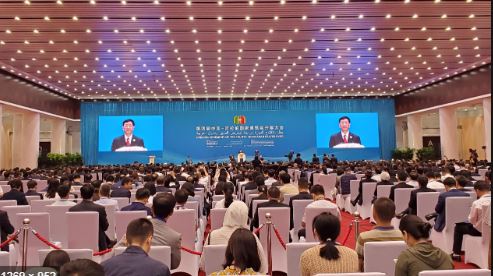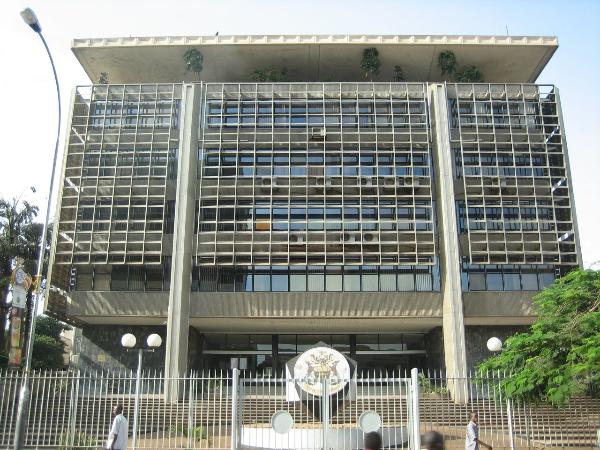
BEIJING – The fourth China-Arab States Expo, which was held in Yinchuan, capital city of northwest China’s Ningxia Hui Autonomous Region from September 5 to 8, has attracted more than 12,600 representatives from 89 countries, 107 exhibition groups, more than 2,900 regional organizations, business associations and enterprises. A total of 362 contracts were signed at the expo, with a planned investment and trade volume of 185.42 billion yuan.
Inaugurated in 2013, the China-Arab States Expo has become an exchange platform for bilateral cooperation in economy and trade, science and technology, medical care and tourism. It is widely recognized by the countries and regions participating in the Belt and Road Initiative, and it has made positive contributions in promoting China-Arab practical cooperation. — Promoting economic and trade exchanges to create more opportunities
Recent years, China and Arab states have promoted the economic and trade cooperation.
In 2018, the trade volume between China and Arab countries reached 244.3 billion U.S. dollars, up 28 percent year bon year. Arab countries have already become China’s most important source of crude oil and important trading partners. Boydiel Houmeid, vice president of the National Assembly of Mauritania, pointed out that Arab countries are looking forward to establishing an international cooperation mode based on mutual understanding, mutual respect and mutual benefit and the bilateral cooperation between China and Arab countries will create more opportunities. Shi Taifeng, secretary of the Ningxia Hui Autonomous Region Committee of the Communist Party of China (CPC), said that the cooperation between China and Arab countries enjoys increasingly promising prospects.
Ningxia will give full play to the role of China-Arab States Expo as an important platform in jointly building the Belt and Road to realize high-quality development and build a bridge for mutual exchanges and cooperation between Chinese and Arab enterprises.
Mahmoud H. Elamin, head of the Mission of the League of Arab States in Beijing, said both sides should put forward new ideas and implement new measures in agriculture, energy, science and technology, and industry where they have comparative advantages. Abdulla Al Saleh, undersecretary of foreign trade at the United Arab Emirates Ministry of Economy, pointed out that Arab countries appreciate China’s progress which they regard as advanced development experience that they can learn from.
The two sides should promote exchanges of technology and experience to promote the sustainable development of Arab countries. — Pooling innovation elements to strengthen technological cooperation During the expo, China-Arab States Technology Transfer and Innovation Cooperation Conference, High-tech Equipment Exhibition and Technological Achievements Promotion and Matchmaking Meeting and Modern Agriculture Exhibition and Agricultural Industry Cooperation Dialogue were held.
Technological cooperation becomes one of the focuses of the expo. In September 2015, the China-Arab States Technology Transfer Center was established in Ningxia. Over the past four years, this national integrated transnational technology transfer platform, together with relevant institutions of Arab countries, has established eight bilateral technology transfer centers in Saudi Arabia, the United Arab Emirates and Egypt. The platform has pushed China and Arab states to carry out a number of advanced technology transfer and demonstration promotion projects, such as the prevention and control of date palm pests and landscaping, and held several training courses for multinational technical talents. “It turned out that the establishment of the technology transfer centers is fruitful”, said Mahmoud Sakr, vice minister of Higher Education and Scientific Research of Egypt, According to him, thanks to this bilateral cooperation, nearly 50 young Egyptian scientists and officials have come to China for training, and Egypt and China have established partnerships in four fields, including intelligent agriculture and remote sensing technology, which have pooled important strength for Egypt’s scientific and technological innovation and development. Under the framework of the Belt and Road science and technology innovation action plan, the science and technology innovation cooperation between China and Arab countries has great potential.
This year, the expo has specially designed exhibitions such as innovative products developed under the co-construction of the Belt and Road and other supporting investment promotion activities. Ten agreements of key cooperation projects such as “Construction Project of Joint Laboratory of Traditional Chinese Medicine” were sighed and ten key technological achievements were released. Buhe Ahmadu, secretary-general of the Ministry of Rural Development of Mauritania, pointed out that the China-Arab states agricultural technology transfer center is an important platform for strengthening the bilateral agricultural cooperation in various fields. Since the establishment of the sub-center in Mauritania, a number of specific measures implemented have really boosted the development of local agriculture.
Stanlake Samkange, director of the Policy and Program Division of the World Food Programme (WFP), said the United Nations is actively participating in the China-Arab States Expo and will provide support for agricultural technology exchanges, demonstration of technological cooperation and implementation of south-south cooperation projects between China and Arab countries. Mohamed Khalil, president of Morocco-China Friendship and Exchanges Association (MCFEA), believed that China has rich experience in the promotion of agricultural technology and the use of arable land equipment, Morocco hopes to learn from the useful experience.
— Building a cooperation platform to jointly build the Belt and Road The expo reflected the joint construction of the Belt and Road by China and Arab countries.
In the high-tech and equipment exhibition hall, Sulaiman Quraan, senior official of the Executive Committee of the Jordan Investment Commission (JIC), was watching the drone and VR equipment with great interest. He said that a wide variety of high-tech products were displayed at the expo which brought a lot of business opportunities.
Although this is the first time that he came to the China-Arab Expo, he learned a lot and believed that the China-Arab Expo could attract more Chinese enterprises to invest in Jordan. “We have a lot of business talks these days. Many Chinese enterprises believe that infrastructure construction in the Middle East can be further promoted.” After visiting the exhibition of innovative products under the cooperation of the Belt and Road, Nasma Barussi, director-general of the Investment and Export Bureau of the Investment Promotion and Import Development Agency of Oman, iterated that the exhibition was very impressive.
She said that they saw the advanced technology of Chinese enterprises and the large scale of the market at the expo. According to Magdy Ghazi, chairman of the General Industrial Development Authority under the Ministry of Trade and Industry, Egypt, the action of jointly building the Belt and Road will bring win-win results to Egypt, China and other countries. “Egypt is an important partner of China and also an important platform for mutually beneficial cooperation between China and African countries.
It has provided myriad opportunities for Chinese enterprises to connect with African countries, while promoting its own development.” Aboubaker Omar Hadi, chairman of Djibouti Ports & Free Zones Authority (DPFZA), said while drawing the outline of the African continent on the tea table with his fingers that the railway built by China has greatly promoted the communications between the local people and the outside world.
This modern electric railway connects the coastal and inland areas and even uses clean energy, thus greatly reducing the cost of transporting goods. “We owe thanks to China for building this infrastructure for us!”





